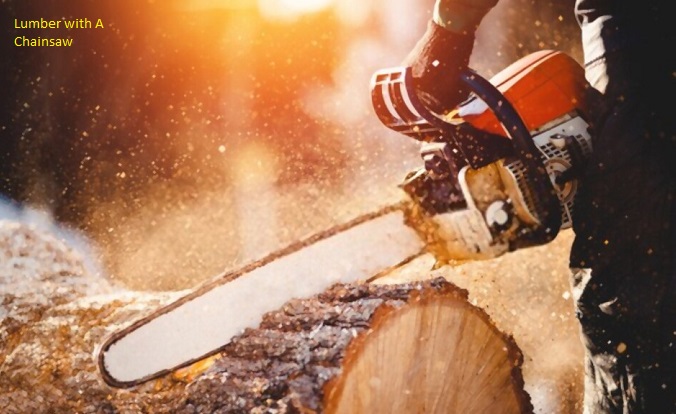When it comes to working with chainsaws, one of the most common questions that often pops up is whether chainsaw blades are universal. Understanding chainsaw blade compatibility is crucial for ensuring safety, efficiency, and productivity in your cutting tasks.
In this comprehensive article, we will delve deep into the world of chainsaw blades, exploring their universality, compatibility factors, and tips for selecting the right blade for your specific needs.
The Basics of Chainsaw Blades
Before we dive into the topic of universality, let’s first understand the basics of chainsaw blades. A chainsaw blade, also known as a chainsaw chain, is the cutting component of the chainsaw that wraps around the guide bar. It is composed of cutting teeth, drive links, and rivets, all working together to deliver precise and powerful cutting performance.
Exploring the Myth of Universal Chainsaw Blades
Myth or Reality: Are Chainsaw Blades Universal?
The concept of universal chainsaw blades often sparks debates among chainsaw enthusiasts. While it would be convenient to have a one-size-fits-all solution, the reality is that chainsaw blades are not entirely universal.
Factors Affecting Chainsaw Blade Compatibility
Several factors come into play when determining the compatibility of chainsaw blades. Let’s explore these factors to understand why not all chainsaw blades can be used interchangeably.
Chainsaw Blade Compatibility Factors
- Guide Bar Length
One of the primary compatibility factors is the guide bar length. Chainsaw blades are designed to fit specific guide bar lengths, and using a blade that is too long or too short for your chainsaw can lead to serious safety hazards. - Chain Pitch
The chain pitch refers to the distance between the drive links, and it varies between different chainsaw models. Using a chainsaw blade with an incompatible chain pitch can result in poor cutting performance and increased wear and tear. - Gauge Size
The gauge size of a chainsaw blade determines the thickness of the drive links. Different chainsaws require different gauge sizes, and using an improper gauge can cause kickbacks and potential damage to the chainsaw. - Drive Link Count
The number of drive links in a chainsaw blade is crucial for proper fitting. Using a blade with an incorrect drive link count will prevent the chain from rotating smoothly around the guide bar. - Safety Features
Modern chainsaw blades often come equipped with safety features like anti-kickback and low-kickback designs. These features are engineered to enhance user safety and prevent accidents. Using a non-compatible blade may compromise these safety measures.
How to Find the Right Chainsaw Blade
Selecting the right chainsaw blade for your chainsaw can seem daunting, but with the right knowledge, you can make an informed decision. Here are some steps to guide you through the process:
- Check the Chainsaw Manual
Always refer to the chainsaw’s manual or manufacturer’s website for information on compatible chainsaw blades. They often provide a list of approved blades that work well with your specific model. - Identify the Chainsaw Model
Take note of the chainsaw’s model number and specifications. These details are essential when searching for compatible chainsaw blades. - Consider Your Cutting Needs
Think about the type of cutting tasks you will be performing most frequently. Different chainsaw blades are designed for various applications, such as cutting wood, pruning, or felling trees. - Consult with Experts
If you’re uncertain about which chainsaw blade to choose, don’t hesitate to seek advice from experienced chainsaw users or professionals at a reputable chainsaw supply store.
Chainsaw Blade Maintenance Tips
Maintaining your chainsaw blades is crucial for their longevity and cutting performance. Here are some essential maintenance tips:
- Regular Sharpening
Keep the cutting teeth sharp by regularly filing them with a chainsaw file. Dull teeth not only reduce cutting efficiency but also increase the risk of kickbacks. - Proper Lubrication
Ensure that the chainsaw chain is adequately lubricated with bar and chain oil to reduce friction and prevent overheating. - Tension Adjustment
Regularly check and adjust the tension of the chainsaw blade to ensure it sits snugly on the guide bar.
Frequently Asked Questions
Can I use a longer chainsaw blade on my chainsaw?
It is not recommended to use a longer chainsaw blade than what is specified for your chainsaw. Doing so can cause the chain to bind or create safety hazards.
Can I replace a chainsaw blade with a different pitch?
No, replacing a chainsaw blade with a different pitch is not advisable as it will affect the cutting performance and could potentially damage the chainsaw.
How often should I sharpen my chainsaw blade?
The frequency of sharpening depends on how frequently you use the chainsaw. Generally, chainsaw blades should be sharpened after every 3-5 hours of use.
Are all safety features in chainsaw blades the same?
No, different chainsaw blades may have varying safety features. Always check the product specifications to understand the safety features available.
Can I use a chainsaw blade designed for hardwood on softwood?
While it may be possible, it is not recommended. Chainsaw blades designed for specific materials deliver the best results and longevity.
Conclusion
Chainsaw blades are not universal, and their compatibility is influenced by various factors such as guide bar length, chain pitch, gauge size, drive link count, and safety features. It is crucial to select the right chainsaw blade for your specific chainsaw model and cutting needs to ensure safety and optimal cutting performance.
Regular maintenance and adherence to safety guidelines will further enhance the longevity of your chainsaw blade and contribute to a successful cutting experience. Remember to always refer to the chainsaw’s manual and seek professional advice if needed, and you’ll be well on your way to becoming a chainsaw expert!


